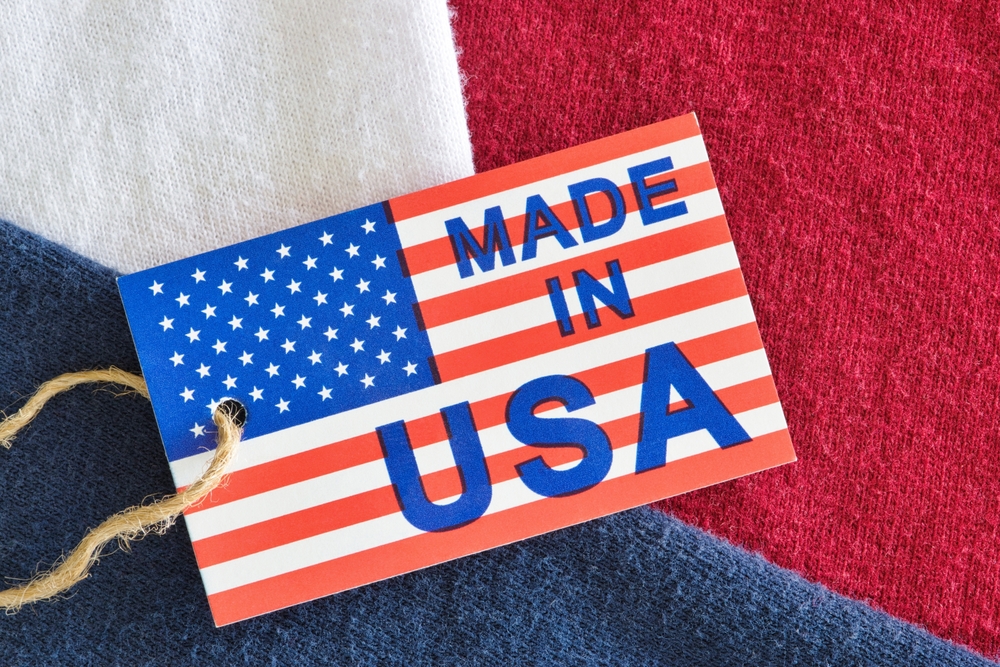
The resurgence of US manufacturing growth isn’t just good news for factories—it’s creating ripple effects across the entire supply chain. As more companies look to bring production back to the US, demand is rising for raw materials, manufacturing equipment, and commercial infrastructure. This shift presents significant opportunities for businesses that supply materials, components, and specialized manufacturing solutions.
Companies that support domestic production are poised for increased sales. But with new opportunities come new challenges—scaling operations, managing supply chains, and meeting customer demand efficiently. In this post, we’ll explore the key drivers behind US manufacturing growth and how businesses can capitalize on this trend with the right technology and strategy.
The Shift Towards Domestic Manufacturing
The COVID-19 pandemic exposed vulnerabilities in global supply chains, leading to shortages and delays across various industries. Companies that once relied heavily on overseas production faced unprecedented challenges in meeting consumer demand. This situation highlighted the risks associated with extended supply chains and underscored the need for more localized manufacturing solutions.

US manufacturing growth is on the rise, and it offers a great opportunity for your company to increase sales while supporting new and expanding businesses.
Additionally, the implementation of new tariffs under the Trump administration may result in an international trade war. The tariffs meant to help grow domestic manufacturing could actually raise costs for manufacturers that import goods and materials used to make finished products. As a result, many US businesses are choosing US suppliers over imported goods. This means increased sales for US manufacturers. It also means that more businesses will move their operations back to the US to mitigate higher costs and capitalize on domestic opportunities.
Current State and Future Outlook of US Manufacturing Growth
As of January 2025, the manufacturing sector employed nearly 13 million workers, a slight increase from previous months. While job growth has decelerated over the past year, employment levels remain above pre-pandemic figures. This stability suggests a resilient sector poised for future expansion.
Several factors contribute to the optimistic outlook for US manufacturing:
- Reshoring Initiatives: Data from the Reshoring Initiative indicates that more than 1 million US manufacturing jobs have been announced since 2019, driven by reshoring and foreign direct investment (FDI).
- Government Policies: Strategic policies supporting essential goods production have led to significant job announcements in sectors like semiconductor chips and solar energy. Future progress must come more from government policies that enhance long-term US manufacturing cost-effectiveness rather than subsidies.
- Technological Advancements: Investments in automation and advanced manufacturing technologies enhance productivity and competitiveness, making domestic production more viable.
Looking ahead, the focus will be on creating a US Industrial Policy that will help make American manufacturing more competitive in different industries. Key issues will include skilled workforce development, currency policies, new tariffs, and the integration of AI and automation. Rising geopolitical tensions remain the primary force driving this shift.
Recent Announcements of Expanded or New U.S. Manufacturing Facilities
Several recent notable developments underscore the momentum of US manufacturing growth:
- Ohio Manufacturing Growth: Paper product maker First Quality Tissue is establishing a $984 million ultra-premium towel and tissue manufacturing facility in Defiance. The 1.6-million-square-foot plant will create more than 400 jobs, with $22.5 million in annual payroll by 2032. In addition, Anduril Industries announced plans to build a nearly $1 billion autonomous weapon system facility in Pickaway County.
- Power Expansion: GE Vernova plans to invest nearly $600 million in its US factories and facilities over the next two years. The investment will create over 1,500 new jobs. It aims to meet the growing electricity demand, strengthen local supply chains, and boost energy innovation in the US.
- Domestic Pharmaceuticals: Eli Lilly and Company plans to expand domestic medicine production by constructing four new pharmaceutical manufacturing sites in the US. With this addition, the company’s total US capital expansion commitments have surpassed $50 billion since 2020.
Increased Sales Opportunities for Established Manufacturers

Despite the threat of new tariffs on supplies, established US manufacturers can realize increased sales and streamlined operations with Frontier ERP.
While opinions differ on the impact of tariffs, imports, and US-made product prices, the resurgence of US manufacturing presents opportunities for established manufacturers, including:
- Wood and Metals: The demand for domestically produced wood and metals is rising as industries seek local sources for raw materials. This trend offers opportunities for metal and wood product manufacturers to supply materials for new infrastructure and production facilities.
- Commercial Furniture and Doors: New manufacturing facilities and offices require quality furniture and a variety of doors, creating opportunities for local suppliers. Manufacturers can capitalize on this demand by providing ergonomic and durable furniture solutions tailored to industrial environments.
- Cabinetry and Lockers: The construction of new facilities necessitates storage solutions, boosting demand for cabinetry and locker manufacturers. Companies specializing in these products can offer customized designs to meet specific organizational needs.
- Windows and Glass: Commercial buildings, office spaces, and new facilities require high-quality windows and glass solutions for aesthetics, energy efficiency, and security. This creates opportunities for manufacturers to supply architectural glass, curtain walls, and insulated glazing tailored to modern construction demands.
- Engineer-to-Order (ETO) Products: Customized equipment and machinery tailored to specific manufacturing processes are in high demand, offering opportunities for ETO manufacturers. By collaborating closely with clients, ETO companies can deliver solutions that enhance operational efficiency.
Economic Ripple Effects and New Business Creation
The expansion of manufacturing facilities stimulates economic activity in surrounding communities:
- Job Creation: New plants and expansions lead to employment opportunities, attracting workers and their families to the area. This influx contributes to a more vibrant local economy.
- Housing Development: An increase in population drives demand for housing, benefiting real estate developers, construction companies, and home decor manufacturers. Communities may see growth in residential projects to accommodate new residents.
- Retail and Restaurants: A growing population supports local businesses, including retail stores and dining establishments. Manufacturers can seize opportunities to cater to the needs of the expanding community with commercial cabinetry, flooring, and seating.
- Transportation Services: Growing manufacturing hubs require enhanced infrastructure and public transit options. Manufacturers of automotive parts, tires, and construction equipment are sure to see increased sales.
- Support Industries: Healthcare facilities, schools, and other essential services see an uptick in business as more people move into the area. Childcare centers, entertainment venues, and fitness centers may also emerge to cater to the expanding workforce and will rely on local suppliers.
Leveraging Frontier ERP to Capitalize on Manufacturing Growth
As US manufacturing continues to grow, businesses need reliable tools to manage their increasing workload. Frontier ERP is designed to help manufacturers, suppliers, and service providers streamline their operations, maximize efficiency, and capitalize on new business opportunities.
1. Sales & Customer Management

Frontier’s built-in CPQ software takes the frustration out of quotation management by utilizing a parametric product configurator for complex configurations and automated pricing structures.
- Track leads and customer interactions effortlessly.
- Manage a growing customer base with integrated CRM tools.
- Automate workflows to reduce administrative tasks and focus on sales growth.
2. Configure Price Quote (CPQ) for Faster Sales
- Provide quick and accurate quotes for complex product configurations.
- Automate customer pricing models based on materials, labor, and production costs.
- Speed up the sales cycle with faster approvals and fewer errors.
3. Production Scheduling & Tracking
- Allocate resources effectively to meet increased demand.
- Automated production tracking for better quality control.
- Adjust schedules in real time to minimize downtime.
4. Procurement & Inventory Management
- Maintain optimal inventory levels to avoid shortages and overstock.
- Automate supplier communications for faster order fulfillment.
- Reduce costs with smart procurement strategies and better vendor negotiations.
By integrating Frontier ERP, businesses can adapt quickly to industry changes, scale operations efficiently, and increase sales as new manufacturing opportunities emerge.
Conclusion: A Prime Opportunity for Growth
The US manufacturing growth trend is creating opportunities for increased sales for suppliers, manufacturers, and service providers. The pace of US manufacturing growth will be gradual due to time, global conflicts, and imposed tariffs. However, US manufacturing is set to expand, bringing with it new facilities, jobs, and economic growth.
To stay ahead of the competition, now is the time to invest in scalable solutions like Frontier ERP. By optimizing sales, production, scheduling, and procurement, companies can boost efficiency and profitability while capitalizing on the resurgence of domestic manufacturing.
Want to learn how Frontier ERP can help you grow with US manufacturing? Contact us today!




